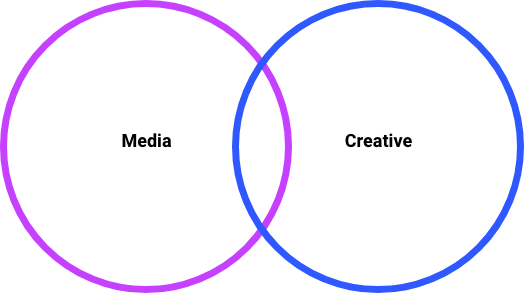But the Title Has Evolved, the Realm has Expanded and the
Rules are Changing
Every year, I have a chance to attend a variety of industry leading, thought-provoking events designed to help digital media strategists elevate the impact of our work. The new insights and ideas gleaned from the TV & Video Summit hosted by MediaPost last fall have already influenced the way our team at Modern Impact is leveraging video on behalf of our clients.
The King is Dead. Long Live the King.
Let’s start with the most popular question I heard throughout the conference: Is TV dead? The answer really depends on how you define it. “TV” as we once knew it is certainly dead.
Thirty years ago, “TV” meant “television” and when you used either word it was just as likely to be a reference to the set in your home as it was to any programming that appeared on it. Broadcast and cable programming were the only game in town and that set in your family room (or favorite bar) was the only place it played. Popular shows attracted massive audiences and huge advertising revenue because they were only available at the one time each week their networks chose to present them.
It was the age of “appointment TV” and if you missed it, you missed out. At least until rerun season (or you figured out how to set your VCR).
To be honest, I miss those days a little bit. As a media strategist, today’s digital environment provides far more opportunities in terms of targeting, segmentation, and cost efficiency. But there’s something unifying as a society when half the people you know are doing the same thing at the same time every week, and then discussing it together the next day. It’s the reason why “tent pole” events like the Super Bowl are still so important.
Redefining the Category
Is the true definition of “TV” still schedule-specific, distribution-based or device-dependent? Isn’t any digitally transmitted form of video entertainment just a more sophisticated iteration of television? Is TV still TV if you watch it on your smartphone – whenever and wherever you feel like it?
Of course it is.

On-demand, subscription-based streaming services like Netflix, Amazon and Hulu certainly qualify as TV. Legacy cable networks like HBO and Showtime have simply altered their delivery systems and are still part of the TV category. Traditional broadcast networks like NBC, CBS and ABC are still in business. But now they’re creating content for all screens and devices because consumers are in control and expect entertainment on demand.
I’d posit that even one-off videos and other content created by brands and individuals on YouTube or social media qualify as “TV” if there’s a way to attach some sort of sponsorship, product promotion or marketing message.
As far as I’m concerned, if you watch it on a screen, it’s basically “TV.” So, in that way, TV effectively lives on and TV is still king. But the name has evolved, the realm is obviously expanding, and the rules are changing.
MPVD
Delivers video programming services via cable, satellite or telco, usually for a subscription fee
Virtual MVPD
Live and on-demand content via internet-only subscription
TV Everywhere
Live and on-demand content via pay TV subscription
AVOD/SVOD
On-demand content either with or without ads
Fast
Streaming services that are free to the consumer and ad supported
Renaming the Age
If the early age of broadcast television was TV 1.0 and the introduction of subscription cable heralded the advent of TV 2.0, then what we’re experiencing today might be TV 3.0 – or even 3.5. As I see it, TV 3.0 really began with Internet Protocol TV (IPTV), the transportation of broadcast content to digitally hosted destinations and the option of video pre-roll marketing.
So, it’s probably time we start referring to all of the above (with the possible exception of over-the-air broadcast television) as the age of Video 3.0. And the opportunities for marketers in this interactive category are expanding at an exponential rate.
Progressive Opportunities
Livestreams, Gaming and Digital Out-of-Home (DOOH) are nothing new and the recent pandemic prompted a boom in consumer adoption. At the same time, growth in the sheer number of video platforms (and the marketing budgets dedicated to them) increased commensurately. But the most dramatic advances in video marketing have been made in the technology driving it.
Remember when Instagram and SnapChat scoffed at the introduction of TikTok? Today, they’re scrambling to create similar features based on consumer-generated video content that will earn anything close to the average TikTok user’s weekly time-on-app. But they’re going to be disappointed if they think that’s all it’ll take – because TikTok’s leadership position is predicated largely on leveraging true Web 3.0 tech.
While Web 2.0 protocols are based on meta data and #hashtags that someone manually inputs into content, TikTok’s Web 3.0 AI uses facial and object recognition to categorize every element in a video, then uses sound waves to enable instant closed captioning. It also analyzes self-generated data points and video viewing behaviors – including the points at which the video is paused or repeated – to inform consumer models and keyword strategies. All of which improves the user experience. And what’s good for the consumer is good for business.
Another practical application of Web 3.0 tech in the video space is the introduction of “Shoppable Video.” Imagine you’re watching the Real Housewives of New York and fall in love with the sofa they’re sitting on. Point and click a couple of times, and you can purchase it from Wayfair, West Elm or whoever makes it. The example is imaginary, but the technology is real.
Last summer, Walmart and Roku partnered up to bring shoppable ads to streaming media and Amazon is likely to follow with their own e-commerce and streaming tech. With payment wallets already built into Roku, Apple TV and Firestick applications, shopping from any smart TV or digital device will soon be easier than QVC.
According to Peter Hamilton, head of TV Commerce for Roku, “We’re making shopping on TV as easy as it is on social.” Roku Brand Studio will design custom branded content for TV streaming, and their OneView ad-buying platform will power and measure Walmart’s shoppable ads.

Persistent Challenges
Of course, with so many options across such a fractured landscape, one of the most common challenges many marketers face is determining where to invest their attention, efforts and budgets. Today, average CPMs for traditional TV placements still run $100 or more, while new video options – from Netflix and Hulu to social media – can be instituted for 10%-50% of that.
My best advice is to focus on platforms that are leaning into new technology; those that help you establish a meaningful, measurable share of voice among early adopters and prevent the need to catch up down the road.
Unfortunately, media analytics haven’t kept pace with the tech behind many new video platforms. We’re still missing a comprehensive, unified tool for measurement that not only helps us predict what potential ratings might be but also identifies “ghost viewing” when the TV (or another device) is on and video is playing, but not one is actually watching.
I have to admit I often catch myself turning off the TV but not my Apple TV, and those YouTube videos can run for hours (making me feel a little guilty for unintentionally polluting the analytics of some fellow media director).
And then there’s the challenge of addressing persistent inflation in the overall cost of media. Each individual platform may boast greater cost efficiency, but the aggregate expense of marketing in a fragmented category continues to rise.
One example of advertisers mitigating budget bloat is happening now with Meta/Facebook, as more media managers opt out of what one conference presenter referred to as “the substandard inventory that gets turned on by default to keep CPMs lower.”
But other, more overarching solutions to media inflation include combining media and creative budgets, employing and repurposing existing creative resources or encouraging media to devise strategies using UGC and in-house creative projects.
Evolving Roles for Media & Creative
Which brings us to one of the most important strategies of all: Creating a more symbiotic relationship between media and creative teams. Regardless of whether you employ video tactics or not, the new world of 3.0 capabilities will demand a more integrated approach across all media.
Historically speaking, creative approach has usually driven media strategy, but we’re seeing some role reversals where opportunities identified by media teams are influencing the creative approach. Either of these systems can work, but both require an extra measure of open communication, enthusiastic brainstorming, awkward moments and empathetic cooperation to work well.

Of course, given the speed at which we all live our lives, it also requires timing – and timing requires planning. If media rushes creative or creative fails to hit a deadline, that’s a failure on the part of both teams. Timing may be the most critical factor in the success or failure of any campaign, no matter how wonderful the creative content might be. That doesn’t mean you can’t be spontaneous (or at least appear so). Smart planning allows you to have 50%–75% of that killer concept ready to fire and weave into a “viral moment” instead of starting from scratch in response to some competitor’s latest campaign.
Leveling the Playing Field
There are plenty of examples of successful video marketing, but one of my favorites comes from one of the last companies you’d expect to be out on the cutting edge: McCormick & Company. This 130-year-old spice company is in one of the least glamorous, most competitive, commodity-based CPG categories – and is killing it with storytelling and community building via video.
From owning National Mustard Day to the Hot Sauce Wars of 2021, McCormick has stayed on top of special events and trending topics to connect with their core consumers through clever videos – most of which are shot in-house – that are incorporated into their PR, social and other media. All of which (ironically) has earned them widespread broadcast TV coverage and kept their brand top-of-mind.
The best part is many of these video campaigns were for spices or projects with little or no market growth and funded with “learning” budgets. So, McCormick was able to perform market research while they also discovered how to leverage this new tactic.
In other words, performance marketing doesn’t always have to be tied to direct attribution. If you’re smart and intentional in both your plan and your content, you’ll learn much more than just the latest KPIs.
If McCormick can do it, you can do it. “TV” is still king, but no longer requires a king’s ransom to run. Today’s video tactics allow you to target any size audience effectively.
And that levels the playing field for everyone.


